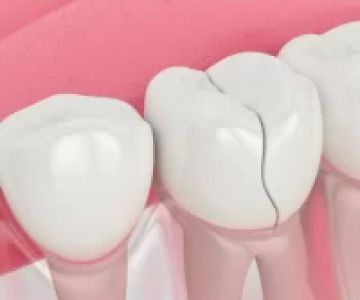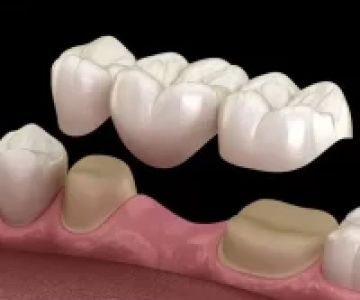Benefits of Using a Water Flosser – Improve Your Oral Hygiene with Water Flossing
- What Is a Water Flosser?
- How Water Flossing Improves Dental Hygiene
- Advantages of Water Flossing Over Traditional Flossing
- Real-Life Stories About Water Flossing
- How to Use a Water Flosser for Best Results
1. What Is a Water Flosser?
A water flosser, also known as an oral irrigator, is a device that uses a stream of pulsating water to clean between your teeth and along the gum line. Unlike traditional floss, which involves a string of floss to physically remove food particles and plaque, a water flosser utilizes water pressure to flush out debris and bacteria. This tool has become increasingly popular due to its ease of use and effectiveness in promoting oral health.
Water flossers are particularly beneficial for people with braces, implants, or bridges, as well as those with sensitive gums or arthritis, who may find traditional flossing challenging. The pulsating water can reach areas that may be difficult to clean with traditional floss, providing a deeper clean and better overall dental hygiene.
2. How Water Flossing Improves Dental Hygiene
Water flossing offers several benefits to your oral health, and it plays a crucial role in preventing gum disease, plaque buildup, and bad breath. Here's how water flossing improves your dental hygiene:
- Improves Gum Health: By gently cleaning the gum line, water flossers help reduce gum inflammation and prevent gingivitis. The pulsating water massages the gums, improving blood flow and promoting healthier gum tissue.
- Removes Plaque Effectively: Plaque buildup between your teeth is a common cause of cavities and gum disease. Water flossers can help dislodge and remove plaque from areas that are hard to reach with a toothbrush or traditional floss.
- Reduces Bad Breath: The action of flushing away food particles and bacteria can help eliminate the odor-causing germs that linger in your mouth, providing fresh breath and improved oral hygiene.
- Helps with Braces and Dental Work: People with braces, implants, crowns, or bridges often find water flossers to be an ideal tool. The water stream can clean around brackets, wires, and dental work, ensuring these areas stay free of debris and plaque.
3. Advantages of Water Flossing Over Traditional Flossing
While traditional dental floss has been a staple in oral care for years, water flossing offers several distinct advantages:
- Ease of Use: For many, water flossers are easier to use than traditional string floss. They are especially beneficial for those with limited manual dexterity or those who struggle with flossing due to arthritis or other conditions.
- Gentle on Gums: Water flossing is much gentler on the gums than string flossing. If you have sensitive gums or are prone to gum bleeding, a water flosser is a great alternative that reduces discomfort and irritation.
- More Thorough Cleaning: Water flossers can reach deeper into pockets between your teeth and along the gum line, providing a more thorough cleaning than traditional floss, especially for hard-to-reach areas.
- Quicker and More Convenient: Water flossing is faster and less tedious than traditional flossing, which can be a more time-consuming process for people with tight spaces between their teeth.
4. Real-Life Stories About Water Flossing
Many people have shared positive experiences after incorporating water flossing into their daily routine. For example, Sarah, a long-time dental patient, says, "I’ve always struggled with traditional flossing, and it would sometimes hurt my gums. Since I started using a water flosser, my dentist has noticed that my gum health has significantly improved, and I no longer get irritated gums after flossing!"
John, another user, shares, "I have braces, and water flossing has made a huge difference. It’s so much easier to clean around my brackets and wires, and my orthodontist says my teeth and gums are looking healthier than ever."
5. How to Use a Water Flosser for Best Results
To get the most out of your water flosser, follow these steps:
- Start with the Right Settings: Set the water flosser to a comfortable pressure level. Start with a lower setting and gradually increase the pressure as you get used to the feeling.
- Angle the Tip Properly: Hold the water flosser tip at a 90-degree angle to your gums. Gently guide the water stream between your teeth and along the gum line, moving from one section of your mouth to the next.
- Clean Your Entire Mouth: Spend about 1-2 minutes flossing your entire mouth, focusing on the gum line, between your teeth, and around any dental work. Make sure to clean both the upper and lower parts of your mouth.
- Rinse Thoroughly: After using the water flosser, rinse your mouth with water or mouthwash to remove any remaining debris.
If you’re looking to improve your dental hygiene routine and experience the benefits of water flossing, visit Dentistry Toothtruth to explore the latest water flossing products and professional advice on maintaining healthy teeth and gums.







 Manhattan Dental Arts4.0 (394 review)
Manhattan Dental Arts4.0 (394 review) Oswego Commons Family Dental4.0 (972 review)
Oswego Commons Family Dental4.0 (972 review) Gardena Dental Care4.0 (416 review)
Gardena Dental Care4.0 (416 review) Dr. Maha Blaibel, DDS5.0 (6 review)
Dr. Maha Blaibel, DDS5.0 (6 review) OMG! Braces4.0 (279 review)
OMG! Braces4.0 (279 review) Second Street Dental4.0 (423 review)
Second Street Dental4.0 (423 review) The Importance of Oral Health Education During Pregnancy for a Healthy Pregnancy
The Importance of Oral Health Education During Pregnancy for a Healthy Pregnancy Best Tips for Brushing Your Teeth Properly for Healthy Gums: Essential Techniques for Oral Health
Best Tips for Brushing Your Teeth Properly for Healthy Gums: Essential Techniques for Oral Health Why Skipping Dental Checkups Can Lead to Bigger Oral Health Problems
Why Skipping Dental Checkups Can Lead to Bigger Oral Health Problems Advantages of Porcelain Dental Restorations
Advantages of Porcelain Dental Restorations How Can Diabetes Cause Tooth and Gum Problems? Preventing and Managing Oral Health Issues
How Can Diabetes Cause Tooth and Gum Problems? Preventing and Managing Oral Health Issues Healthy Habits for Promoting Good Oral Health and Hygiene: Tips for a Healthy Smile
Healthy Habits for Promoting Good Oral Health and Hygiene: Tips for a Healthy Smile